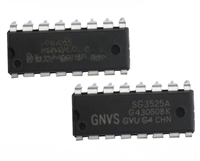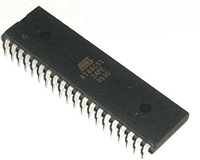DS275
DS275 BLOCK DIAGRAM Figure 1
OPERATION
Designed for the unique requirements of battery-backed systems, the DS275 provides a low-power half-
duplex interface to an RS-232 serial port. Typically, a designer must use an RS-232 device which uses
system power during both negative and positive transitions of the transmit signal to the RS-232 port. If
the connector to the RS-232 port is left connected for an appreciable time after the communication
session has ended, power will statically flow into that port, draining the battery capacity. The DS275
eliminates this static current drain by stealing current from the receive line (RXIN) of the RS-232 port
when that line is at a negative level (marking). Since most asynchronous communication over an RS-232
connection typically remains in a marking state when data is not being sent, the DS275 will not consume
system power in this condition. System power would only be used when positive-going transitions are
needed on the transmit RS-232 output (TXOUT) when data is sent. However, since synchronous
communication sessions typically exhibit a very low duty-cycle, overall system power consumption
remains low.
RECEIVER SECTION
The RXIN pin is the receive input for an RS-232 signal whose levels can range from ±3 to ±15 volts. A
negative data signal is called a mark while a positive data signal is called a space. These signals are
inverted and then level-shifted to normal +5-volt CMOS/TTL logic levels. The logic output associated
with RXIN is RXOUT which swings from +VCC to ground. Therefore, a mark on RXIN produces a logic 1 at
RXOUT; a space produces a logic 0.
The input threshold of RXIN is typically around 1.8 volts with 500 millivolts of hysteresis to improve
noise rejection. Therefore, an input positive-going signal must exceed 1.8 volts to cause RXOUT to switch
states. A negative-going signal must now be lower than 1.3 volts (typically) to cause RXOUT to switch
again. An open on RXIN is interpreted as a mark, producing a logic 1 at RXOUT.
TRANSMITTER SECTION
TXIN is the CMOS/TTL-compatible input for digital data from the user system. A logic 1 at TXIN
produces a mark (negative data signal) at TXOUT while a logic 0 produces a space (positive data signal).
As mentioned earlier, the transmitter section employs a unique driver design that uses the RXIN line for
swinging to negative levels. The RXIN line must be in a marking or idle state to take advantage of this
design; if RXIN is in a spacing state, TXOUT will only swing to ground. When TXOUT needs to transition to
a positive level, it uses the VDRV power pin for this level. VDRV can be a voltage supply between 5 to 12
2 of 8






 SG3525资料手册详解:SG3525参数分析、引脚说明、应用介绍
SG3525资料手册详解:SG3525参数分析、引脚说明、应用介绍

 AT89C51单片机资料手册详细解析及应用示例
AT89C51单片机资料手册详细解析及应用示例

 CP2102资料手册解读:CP2102引脚说明、关键参数分析
CP2102资料手册解读:CP2102引脚说明、关键参数分析

 资料手册解读:UC3842参数和管脚说明
资料手册解读:UC3842参数和管脚说明
